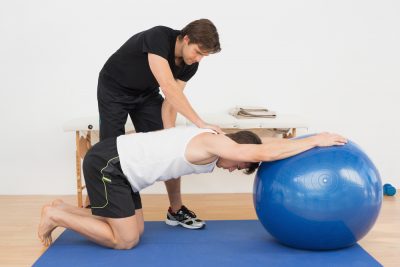Convalescing from an illness is remarkable; at least at that point, there’s the surety that you’d live again as you are out of some critical periods. It is actually one thing to get better from an illness, getting every part of the body to function like they use to, is another challenging aspect. That’s why usually in hospitals, there’s a physiological unit well equipped with both humans and gadgets to help your body get back to normal.
While recovering like that, it takes a series or set of exercises to perfect the recovery process. These are the kind of exercises known as therapeutic exercises. Contained herein this piece is everything you need to know about this form of exercise, its benefits, and types.
Without wasting time on rhetorics, let’s just get started.
Therapeutic Exercise: What It Means
Therapeutic is a derivative of the word ‘therapy’. From a dictionary perspective, therapy means treatment of disease or inability that could either be mental or physical. Therapeutic then means a set of activities that focuses on healing the body or the mind.
Bring the two keywords together, therapeutic will then entail a set to exercise professionally designed for the perfect restoration of one’s health. It’s intended to restore the quality of body and mental functions back to how it used to be or better. To put as a definition, therapeutic exercise is the deliberate systematic execution of planned physical activities (exercises) or movements which is intended to enable a patient or client as the case may be to remediate or prevent impairment of body functions and structure, enhance activities and participation, reduce risk, optimize overall health and enhance fitness and general wellbeing. The goal of this form of exercise is to restore the quality of life.
Physical therapists are professionals who handle therapeutic exercises. They don’t just go about guessing and second-guessing what particular type of exercise would be effective for a patient. Exercises recommended are a product of a thorough prognosis and diagnosis. The patient’s or client’s stage of healing also determines what exercises to incorporate or not.
Types of Therapeutic Exercises
Naturally, a particular exercise has a specific function it performs. So also, different types of therapeutic exercises perform specified functions.
Here are some types of therapeutic exercise:
- The range of motion which is a form of exercise intended to enhance the movement of a particular impaired joint or muscle;
- Aerobic and endurance conditioning which focuses on stimulating heartbeat and oxygen requirement towards generating enough energy;
- Progressive resistive training which targets the muscle for enhanced performance;
- Breathing exercises which also focus on normalizing breathing and cardio-related issues; neuromotor development activity training which intends to strengthen the brain for enhanced bodily function;
- Muscle recuperation training which also focuses on repairing impaired muscles; the list goes on and on.
Why therapeutic exercises are good for you
Having looked at some of the types of therapeutic exercises and the goals they set out to achieve, let’s also consider some of the benefits why it is good for you;
- Enhance bone density: these exercises directly target your bone and strengthens them to function effectively after an impairment.
- Boost breathing power: for patients struggling to breathe, the aerobic exercises work on your respiratory tracts to gradually normalize breathing in the short run.
- Enhance or maintain physical performance: usually, after an injury says for instance an accident, the physical performance of some bodily parts fails or worsens. Subjecting these parts to therapeutic exercises gradually help these parts to be able to perform like they used to or even better.
- Improve safety: as you continue the exercise, you are expected to get better and better such that the risk of retracting to your condition is reduced to the barest minimum.
- Increase aerobic capacity and endurance level: as you engage in several aerobic exercises, your breathing becomes empowered. It is common knowledge that the body relies on oxygen to generate energy, as such more aerobic exercise will help increase oxygen intake and thus lead to optimal production of energy in the body.
- Increase muscle strength, power, and endurance: as you exercise, your muscle power increases and so also your endurance level.
- Enhances postural control: where there exist structural disfigurement of the body, these exercises can help work on your posture.
- It is effective for relaxation of the body and the mind.
- It increases sensory and neuronal awareness.
- It increases the tolerance of activity.
- It prevents or remediates impairment in body fun
 ctions and structure.
ctions and structure. - It enhances health, wellness, and fitness.
- It reduces complications, pain, restriction, and swelling.
- Lastly, it reduces risk and increases safety during activity performance. The list goes on and on.



